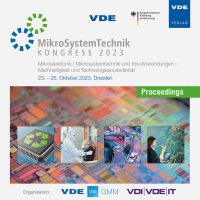Ion beam technology for thin piezoelectric films
Konferenz: MikroSystemTechnik Kongress 2023 - Kongress
23.10.2023-25.10.2023 in Dresden, Deutschland
Tagungsband: MikroSystemTechnik Kongress 2023
Seiten: 3Sprache: EnglischTyp: PDF
Autoren:
Nestler, Matthias; Schulze, Andrea (scia Systems GmbH, Chemnitz, Germany)
Inhalt:
Piezoelectric materials, such as aluminum nitride (AlN) and lithium tantalate (LiTaO3), are widely used in the fabrication of high-performance frequency filter devices. These materials exhibit unique electrical and mechanical properties that make them highly desirable for use as resonators in mobile communication, sensors, and other electronic applications. One challenge of working with piezoelectric materials is the precise control over their physical properties. It is often necessary to modify the material's dimensions to achieve the desired electrical characteristics. This is where ion beam processing comes in. Ion beam etching in general uses a beam of ions to selectively remove or modify material on a nanometer level. This allows extremely precise control over the material's dimensions and properties. Ion beam trimming, in particular, is a technique that is commonly used to structure piezoelectric materials for frequency filter devices. At ion beam trimming, a focused broad ion beam scans over the substrate while sputter etching the material. The process is driven with precision to adjust a single atomic layer. By varying the dwell time, the amount of material removal is controlled in a manner to create the desired thickness, shape or structure. This technique can be used to achieve highly complex and precise geometries, enabling the fabrication of advanced frequency filter devices with superior performance characteristics. Overall, the use of ion beam etching, and especially ion beam trimming, is critical to the development of high-performance piezoelectric devices. These techniques enable researchers and engineers to achieve the precise control over material properties that is necessary to create advanced electronic devices for a wide range of applications.


